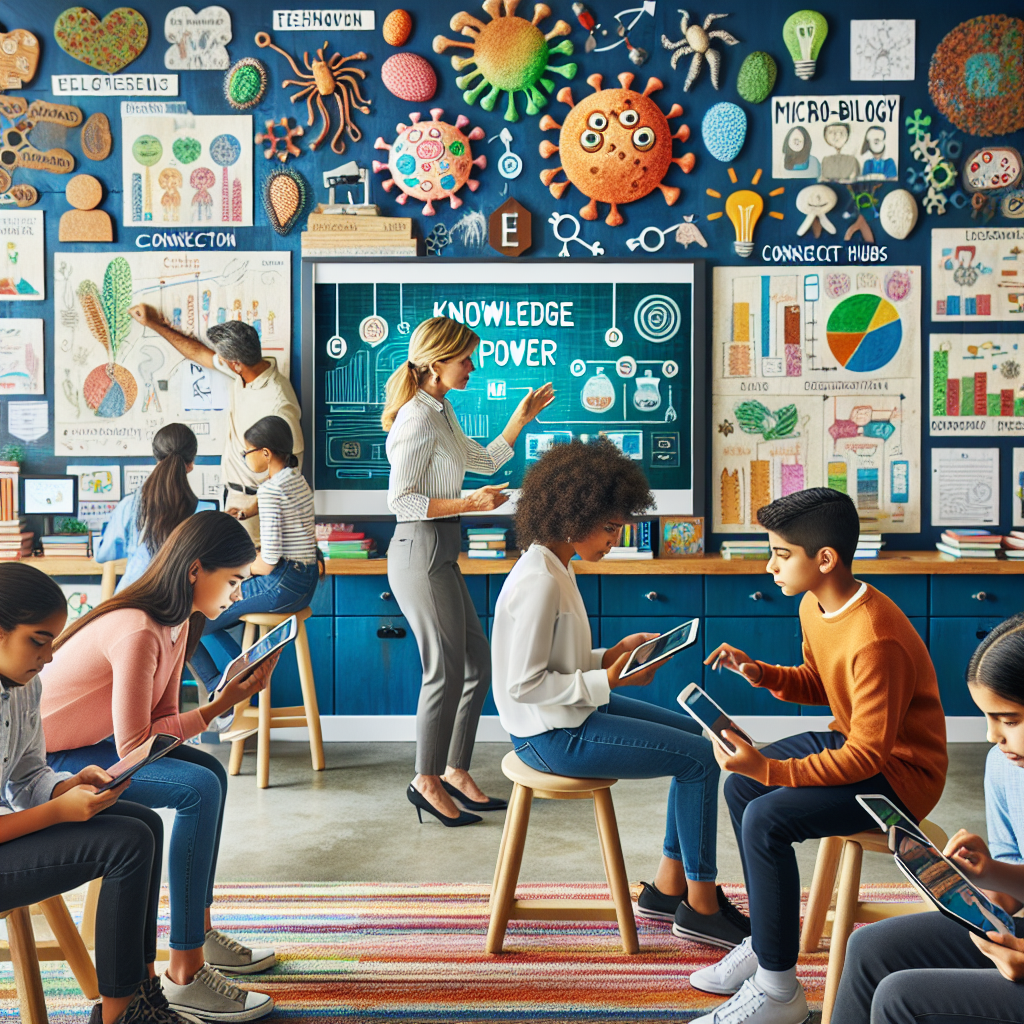Integrating Technology in the Classroom
In an era where digital literacy is as crucial as reading and writing, integrating technology in the classroom isn’t just a bonus—it’s essential for preparing students for the future. From interactive learning to personalized education plans, the benefits of embracing educational technology are vast and varied. In this article, we’ll explore why and how to integrate technology into teaching effectively, and spotlight some top remote educational technology companies leading the way.
The Case for Educational Technology
Educational technology, often referred to as EdTech, has the potential to transform the learning experience, making it more engaging, interactive, and accessible. It encompasses a vast range of tools, from simple apps to complex learning management systems, each aimed at enhancing the educational process.
Why Integrate Technology into Teaching?
Integrating educational technology into teaching can:
- Boost student engagement and motivation through interactive content.
- Provide personalized learning pathways for students with diverse needs and learning styles.
- Facilitate collaboration among students, even remotely.
- Offer teachers valuable data to track students’ progress and adapt instruction accordingly.
- Prepare students with the digital skills they’ll need in the modern workforce.
Overcoming the Challenges
Despite its benefits, integrating technology in education isn’t without challenges. Teachers may face a steep learning curve with new tools, schools might struggle with budget constraints, and ensuring equitable access to technology for all students can be a hurdle. Addressing these challenges requires thoughtful planning, training, and the support of the entire school community.
Strategies for Integrating Educational Technology
To successfully incorporate technology into the classroom, consider the following strategies:
Start with a Clear Vision and Goals
Define what you aim to achieve with educational technology. Is it to improve literacy rates, support STEM education, or facilitate project-based learning? A clear vision will guide the selection of tools and the development of integration strategies.
Provide Professional Development
Offer teachers ongoing professional development opportunities to build confidence and competence in using new technologies. This can include workshops, webinars, and peer-to-peer coaching.
Choose the Right Tools
Select tools that align with your educational goals and are user-friendly for both teachers and students. Prioritize tools that offer strong support and training resources.
Foster a Collaborative Culture
Encourage teachers to share their experiences and best practices with educational technology. Collaboration can lead to more innovative and effective use of tools in the classroom.
Evaluate and Iterate
Regularly assess the effectiveness of technology integration and make adjustments as needed. This can involve gathering feedback from students and teachers, as well as analyzing data on student performance.
Top Remote Educational Technology Companies
As the demand for educational technology grows, several companies stand out for their innovative solutions and commitment to improving learning outcomes. Let’s take a closer look at a few of them.
Company One: XYZ Learning
XYZ Learning offers a suite of tools that facilitate real-time collaboration and assessment, making it easier for teachers to personalize instruction and for students to work together on projects.
Company Two: ABC Interactive
ABC Interactive specializes in interactive whiteboards and learning apps that turn traditional lessons into engaging, hands-on experiences for students of all ages.
Company Three: 123 EdTech
123 EdTech provides a learning management system that streamlines lesson planning, grading, and communication, freeing up more time for teachers to focus on teaching.
Implementing EdTech in Different Subjects
Integrating technology into teaching isn’t a one-size-fits-all approach; it varies by subject. Here are some examples of how technology can be used to enhance learning in different areas:
Mathematics
Use adaptive learning platforms that tailor math problems to students’ skill levels, providing instant feedback and helping them progress at their own pace.
Science
Incorporate virtual labs and simulations to allow students to conduct experiments and explore scientific concepts in a safe and controlled environment.
Humanities
Leverage digital storytelling tools and online resources to bring history and literature to life, encouraging students to become active participants in their learning.
Arts
Explore digital art software and music composition apps that give students new ways to express their creativity and showcase their work.
The Future of Educational Technology
As we look to the future, the role of technology in education is only set to increase. We can expect to see more artificial intelligence, virtual and augmented reality, and personalized learning experiences that cater to individual student needs.
Embracing Change and Innovation
The future of education is dynamic and ever-evolving. To keep pace, educators must remain open to change and innovation, continuously exploring new ways to integrate technology in the classroom.
The Role of Remote Learning
The COVID-19 pandemic has accelerated the adoption of remote learning, demonstrating both its potential and its challenges. As we move forward, educational technology will be crucial in refining remote learning practices and making education more resilient to future disruptions.
Preparing Students for Tomorrow
Ultimately, the integration of technology in the classroom is about more than just enhancing the learning experience—it’s about equipping students with the digital skills they’ll need to thrive in an increasingly tech-driven world.
Conclusion
Integrating technology into teaching is not just a trend—it’s a necessity. By embracing educational technology, we can create more engaging, personalized, and effective learning experiences for students. As we continue to navigate the complexities of the digital age, let’s ensure that our classrooms reflect the world our students are preparing to enter. With careful planning and a collaborative spirit, we can harness the power of technology to unlock the full potential of every learner.




